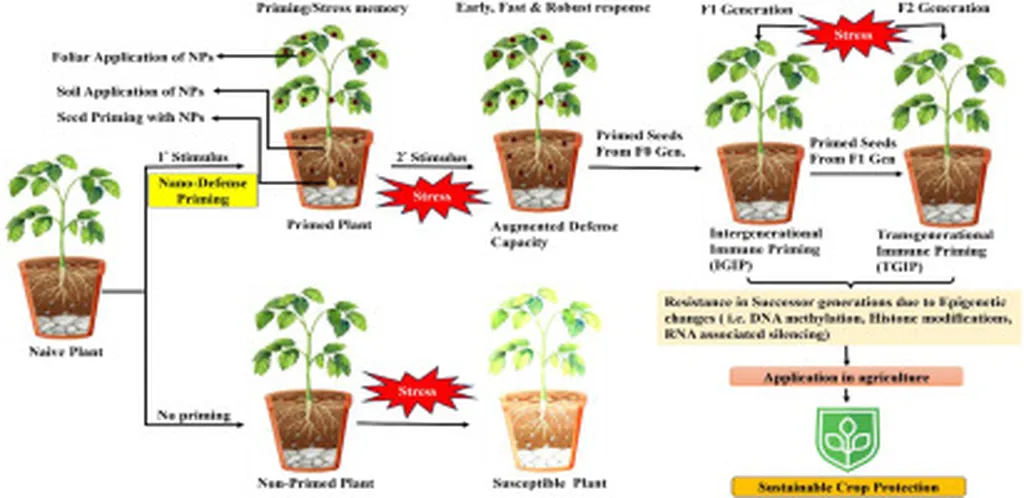In the face of escalating climate volatility, global agriculture is grappling with a stark reality: extreme weather events are chipping away at crop yields by nearly a quarter each year. Conventional protective measures are struggling to keep pace, leaving food security hanging in the balance. Enter a groundbreaking review published in the journal *Current Plant Biology* (translated from Hindi as “Current Plant Science”), which explores innovative, multi-modal priming strategies designed to bolster plant stress resilience. This research, led by Saif Syed from the Division of Applied Phycology and Biotechnology at the CSIR-Central Salt and Marine Chemicals Research Institute in India, offers a glimmer of hope for the future of agriculture and, by extension, the energy sector.
The review highlights the limitations of current plant priming strategies, which often rely on a narrow set of chemical elicitors, phytohormones, and basic hydropriming techniques. These methods lack the flexibility to address multiple stress conditions simultaneously, underscoring the urgent need for more robust and adaptable solutions. “The escalating volatility of environmental stressors demands a paradigm shift in our approach to plant priming,” Syed explains. “We need strategies that can tap into diverse yet synergistic biological pathways to drive stress-resilient agricultural practices.”
The review delves into a range of lesser-known and next-generation nano-based agents that offer multi-layered protection. Arachidonic acids and synthetic analogues of abscisic acid (ABA) recalibrate hormonal signaling, resulting in fine-tuned plant responses under stress. Strigolactones (SL) and SL-mimics coordinate with other phytohormonal signaling cascades to modulate root-shoot architectural dynamics, enhancing stress adaptation. Dual-release gastrotransmitter agents like NOSH-aspirin release hydrogen sulfide and nitric oxide simultaneously, crucial gaseous signaling molecules involved in stress signaling and cellular resilience. Meanwhile, molecules like ebselen provide localized antioxidant support, and ectoine, a naturally derived osmolyte, fortifies cell membranes against dehydration and salinity shocks.
Adding another layer of innovation, nanomaterials like graphene oxide act as smart delivery vehicles for these agents while conferring protective properties of their own. Carbon dots, with their intrinsic optical and reactive oxygen species (ROS) scavenging properties, alongside their exceptional water dispersion and plant tissue penetration abilities, are also promising candidates for nanomaterial-based screening of stress resilience in various plant species.
The review also highlights an expanding library of small molecules engineered to intervene with surgical precision in plant metabolic pathways, targeting stress nodes without inhibiting growth. These agents induce long-lasting “stress memories” through epigenetic tuning and metabolomic reprogramming, training plants to remember and react faster to future threats. This offers broader stress tolerance, reduced toxicity, and more targeted efficacy.
The implications of this research extend beyond agriculture, particularly for the energy sector. As the world grapples with the need for sustainable energy sources, the development of stress-resilient crops can enhance bioenergy feedstocks, ensuring a stable supply of biomass for energy production. “The integration of these advanced priming strategies into agricultural practices can significantly enhance the resilience of bioenergy crops, ensuring a stable supply of biomass for energy production,” Syed notes.
The review published in *Current Plant Biology* not only fills a critical research gap but also paves the way for future developments in the field. As the world continues to face the challenges posed by climate change, the innovative strategies outlined in this review offer a promising path forward, ensuring food security and sustainable energy production for years to come.

